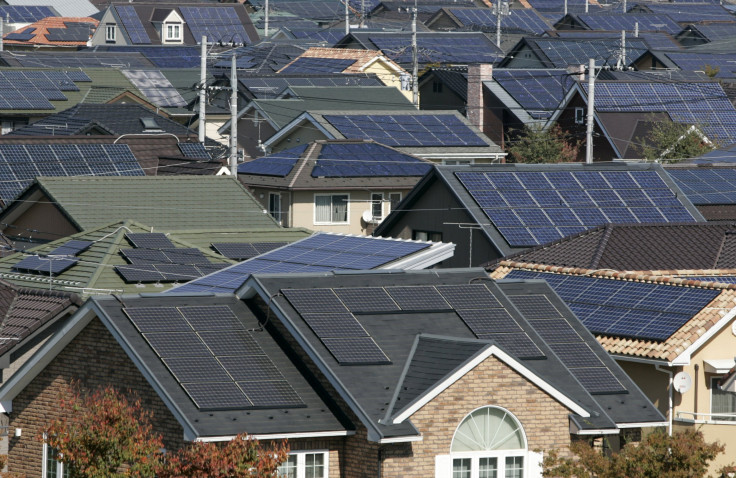Solar Energy In U.S.: Could You Have A Solar Home?

The U.S. saw a massive solar boom in 2016, more than 14 megawatts of potential power were brought on to the grid, bringing the total solar capacity of the U.S. to 42.4 gigawatts. To put those numbers in perspective, there are now 8.3 million homes across the country that could potentially be powered by solar, according to the Solar Energy Industries Association.
Not only did the residential sector see an increase in installations last year, the utility sector experienced a boom as well. Predictions from SEIA show that in the next three years, that number could triple, bringing the total gigawatt capacity to more than 100 million.
Read: Solar Energy Panels, Capacity In The US Soared Last Year
With so many homes and businesses already utilizing solar technologies, the question is where will more be installed to reach that 100 million gigawatt goal?
Google has been working on Project Sunroof, a program to identify what homes and businesses are viable candidates for solar. And what it’s found after analyzing 60 million rooftops is that up to 79 percent of those rooftops are viable candidates for solar. In certain states like Hawaii and Arizona, up to 90 percent of the rooftops are viable. So the space is there, it’s just a matter of getting solar panels on it to get the energy flowing into the grid. You can even look up your address to find out whether your roof has been analyzed yet.
But solar doesn’t come without its faults. Its biggest challenges are that it’s an intermittent source of energy and inexpensive reliable storage options aren’t widely available yet. This means that when the sun isn’t shining for a day, or your roof is in the shade for a part of a season, energy has to come from somewhere else meaning those coal and nuclear powered plants still have to be running. So as of now solar operates on a “use it or lose it” plan. But when a home produces more energy than it needs, which on a sunny day it probably does, most people send that excess energy goes back into the grid.
Read: Artificial Island To Power Homes As Europe Pushes Renewable Energy
The cost of installation has lowered but even still, while sending energy back into the grid, and tax rebates and subsidies can help lower the initial cost of installation, there are definitely people who have viable roofs who can’t afford to add panels to their land or home. And then of course there are people who are wear of the way solar panels look on their homes or in their towns.
Solar is increasingly becoming a more popular renewable source of energy, but we still have some catching up to do.
© Copyright IBTimes 2024. All rights reserved.





















